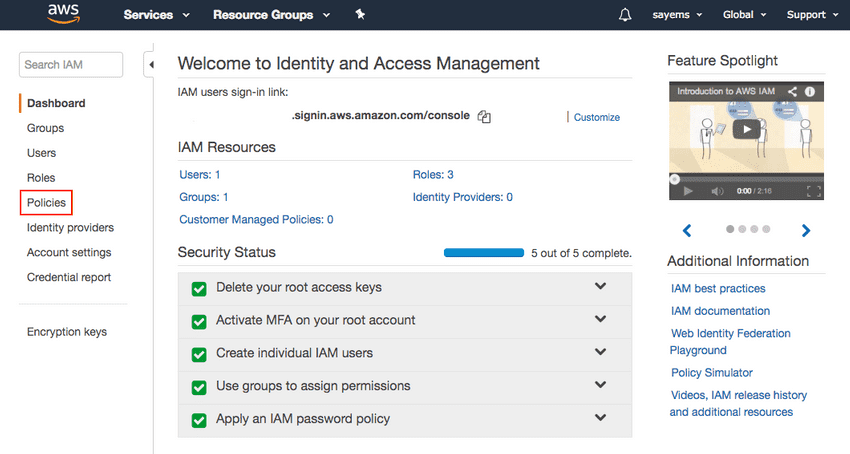
However, if you have specific use cases that require long-term credentials with IAM users, we recommend that you rotate access keys. Where possible, we recommend relying on temporary credentials instead of creating IAM users who have long-term credentials such as passwords and access keys. For the complete list of tasks that require you to sign in as the root user, see Tasks that require root user credentials in the AWS Account Management Reference Guide.Īn IAM user is an identity within your AWS account that has specific permissions for a single person or application. Perform the tasks that only the root user can perform. Safeguard your root user credentials and use them to Strongly recommend that you don't use the root user for your everyday tasks.
#Aws iam authenticator password#
Signing in with the email address and password that you used to create the account. This identity is called the AWS account root user and is accessed by When you create an AWS account, you begin with one sign-in identity that has complete access to all AWS servicesĪnd resources in the account. To learn more, see Multi-factor authentication in theĪWS IAM Identity Center (successor to AWS Single Sign-On) User Guide and Using multi-factor authentication (MFA) in AWS in the IAM User Guide. For example, AWS recommends that you use multi-factorĪuthentication (MFA) to increase the security of your account. Regardless of the authentication method that you use, you might be required to provideĪdditional security information. To sign requests yourself, see Signature Version 4 signing process in For more information about using the recommended method You don't use AWS tools, you must sign requests yourself.
#Aws iam authenticator software#
If you access AWS programmatically, AWS provides a software development kit (SDK) and aĬommand line interface (CLI) to cryptographically sign your requests using your credentials.
#Aws iam authenticator how to#
For more information about signing in to AWS, see How to sign in to your AWS account When you access AWS by using federation, you are indirectly assuming a role.ĭepending on the type of user you are, you can sign in to the AWS Management Console or the AWS access When you sign in as a federated identity, your administrator previously set up identity federation using IAM roles. You can sign in to AWS as a federated identity by using credentials provided through an identity source.ĪWS IAM Identity Center (successor to AWS Single Sign-On) (IAM Identity Center) users, your company's single sign-on authentication, and your Google or FacebookĬredentials are examples of federated identities. You must beĪuthenticated (signed in to AWS) as the AWS account root user, as an Authenticating With identitiesĪuthentication is how you sign in to AWS using your identity credentials. To view example Amazon WorkMail identity-based policies that you can use in IAM, see Amazon WorkMail identity-based Write policies to manage access to Amazon WorkMail. IAM administrator – If you're an IAM administrator, you might want to learn details about how you can To learn more about how your company can use IAM with Amazon WorkMail, see How Amazon WorkMail works with Review the information on this page to understand theīasic concepts of IAM.


Submit requests to your IAM administrator to change the permissions of your service users. It's your job to determine which Amazon WorkMail features and resources your service users should access.

Service administrator – If you're in charge of Amazon WorkMail resources at your company, you probably haveįull access to Amazon WorkMail. If you cannot access a feature inĪmazon WorkMail, see Troubleshooting Amazon WorkMail identity Understanding how access is managed can help you request the right permissions from your administrator. As you use more Amazon WorkMail features to do your work, you might need additional permissions.

With the credentials and permissions that you need. Service user – If you use the Amazon WorkMail service to do your job, then your administrator provides you How you use AWS Identity and Access Management (IAM) differs, depending on the work that you do in Amazon WorkMail.


 0 kommentar(er)
0 kommentar(er)
